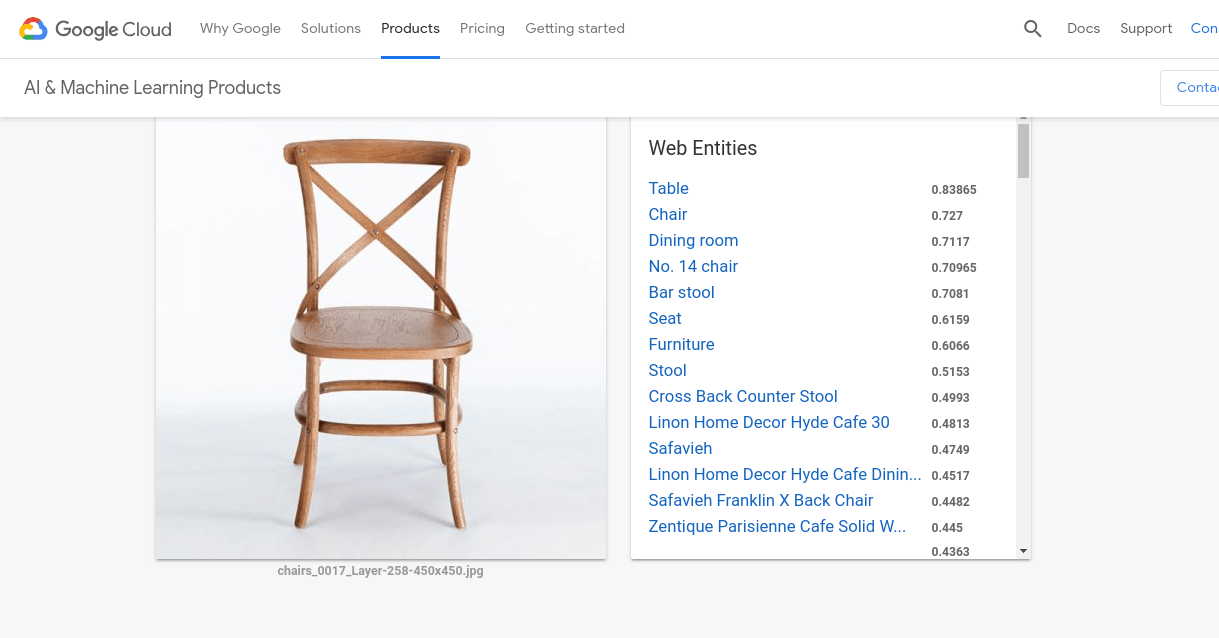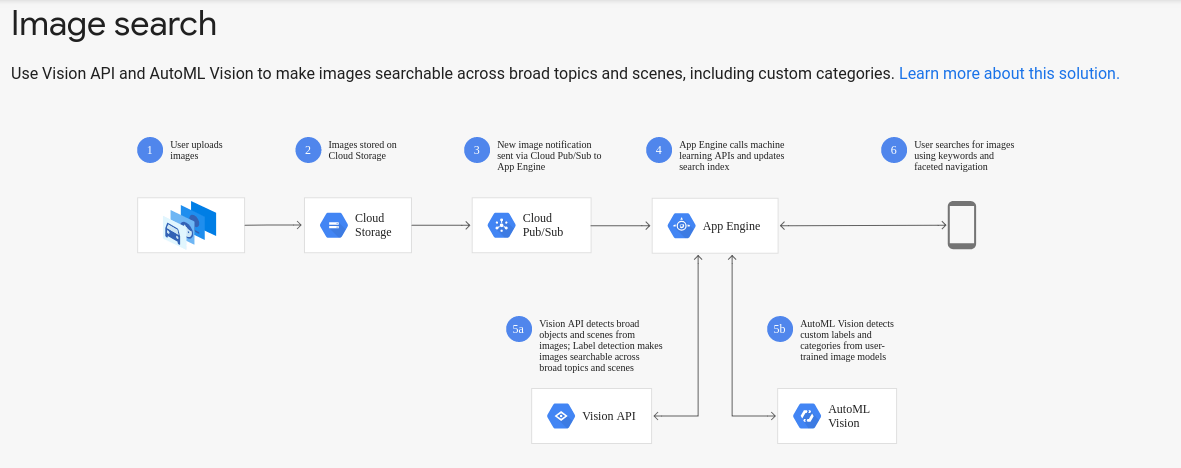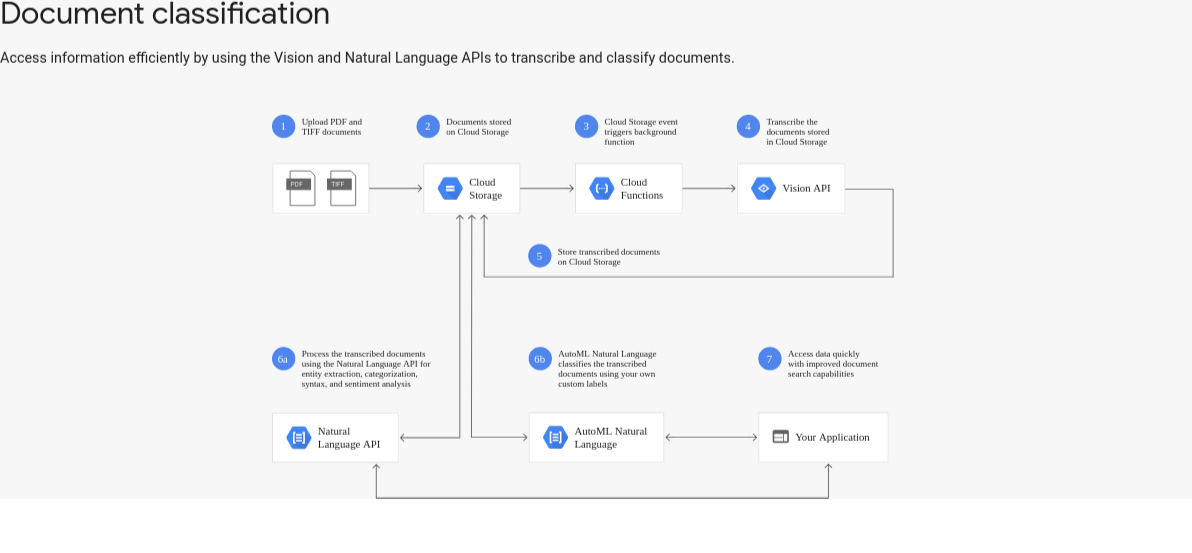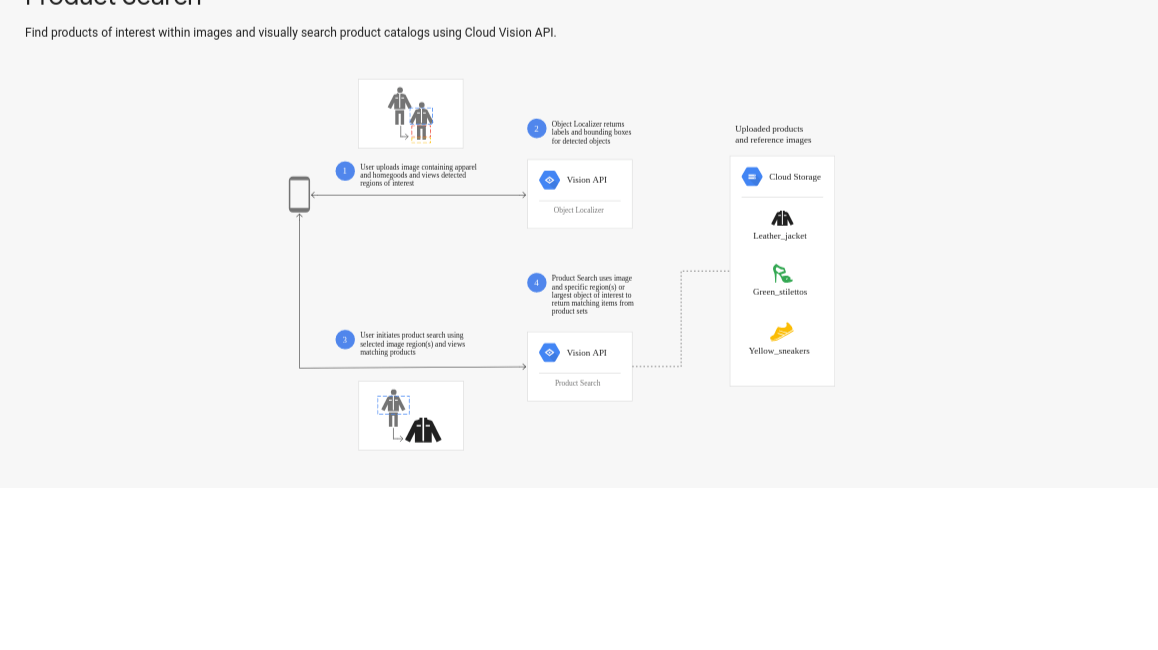How Cloud Vision API is utilized to integrate Google Vision Features
The cloud vision API is used to integrate diverse range of Google Vision functionalities and features. This integration mainly comprises of image labelling, face, logo, landmark detection, optical character recognition (OCR), and detection of explicit content into desired applications.
Functioning with Vision Search Project
While working with the Vision Search project, when a user uploads an image and explicitly request or calls Google cloud vision API, it will return required image related keywords. For instance, if we upload a round chair image, it will automatedly return back with a stool, table, chair, dining room and other such image based keywords.
The cloud vision derives insights from your images with the help of commanding pre-trained API models and with no trouble trains custom vision models using AutoML Vision BETA.
Dealing with Powerful Image Analysis
Cloud Vision provides both pre-trained models through an API and the ability to create custom models. It utilizes AutoML Vision to offer flexibility and suppleness depending on the specific use case which you are relating to the context. The Cloud Vision API further facilitates as well as enables developers to comprehend the content of an image by summarizing sturdy machine learning models into a straightforward and simple to utilize REST API.
Classification of Images into Multiple Categories
It swiftly classifies images into multiple categories (such as, “sailboat”), detects entity objects and faces within the needed images, and reads the provided printed words contained within the involved images. You can create metadata on your image catalog, moderate offensive content, or let fresh marketing scenarios via image sentiment analysis.
How AutoML Vision Operates with Custom Models
AutoML Vision Beta makes it possible for developers with restricted machine learning proficiency to train high-quality custom models. Subsequent to uploading and labeling of images, the AutoML Vision will train a model that can scale as required to become accustomed to demands. AutoML Vision delivers higher model precision and swifter time to build a production-ready model.
Step – 1: The user uploads the required images.

Step – 2: The vision API detects board objects and sights form the required images, and get the labels returned with detection keywords, web entities keywords, safe search, properties, and JSON.

Detecting insights from your images:
You can straightforwardly detect broad sets of objects in the required images, from flowers, animals, or transportation to multiple other objects and their categories found within the images. Vision API enhances over time by using fresh concepts which are introduced, and its precision is made for better presentation.
While working with AutoML Vision, you can build custom models that highlight specific ideas and concepts from the images. This allows the use cases to range from categorizing the needed product images to the requirement of their diagnoses.
Extraction of required text:
Optical Character Recognition (OCR) facilitates you to detect and extract text within your images, along with using automatic language identification. Vision API supports an extensive set of languages which makes it suppler and more flexible to use.
Power and influence of the web:
Vision API utilizes the power of Google Image Search to detect topical entities like the in-hand celebrities, logos, and the news events. Millions of beings are backed and supported, so you can be sure that the newest applicable images are accessible with ease. Merging this with the Visually Similar Search makes simple to search alike images on the web making things straightforward to handle.
The Cloud Vision Use Cases:
- Image Search flow:

- Document classification flow:

- Product search flow:

The Key Cloud Vision API Functionalities and Features:
One can discover insights from the images using the strong and powerful Cloud Vision API in the following ways described below.
- The label detectionIt detects broad sets of categories within an image, for example ranging from the required modes of transportation to the animals.
- Detection on webSearch online for related images to work with them.
- Optical character recognitionDetect and fetch the text within an image, with back-up and support for an extensive range of languages. This even supports the automatic language identification process. You can easily upload the PDF and TIFF files with images like PNG and GIF files to view the complete list of supported files.
- Landmark detectionIt helps in detecting all the accepted natural and man-made structures within a required image.
- Face detectionDetect numerous faces within an image, along with the connected significant facial attributes which includes the emotional state or wearing headwear. Facial recognition is not backed up and fully supported.
- Moderation of ContentIt assists in automated detection of precise content like adult content or violent content within a required image.
- Handwriting recognition BETAUtilizing the Vision API, one can easily distinguish human handwriting in totaling to machine-printed text effectively.
- Detection of LogoIt helps in detecting accepted product logos within an image.
- Object localizer BETAIn accumulation to spotting an object in an image, the Vision API can now also recognize wherein the image that objects is located. It also detects how many of those categories of object are present in the current image.
- Integrated REST APIIt assists in admission to the Cloud Vision API through REST API to request one or more annotation sorts per image. Images can be uploaded as per the demand or incorporated with the Google Cloud Storage.
- ML Kit integrationIntegrate with ML Kit, a mobile SDK that makes it simple to apply Google’s machine learning technology to Android and iOS apps. It works in an authoritative yet simple to use package.
- Product search BETAIt helps in getting acquainted with the products from your catalog within the web and mobile pictures. It further implements visual search experiences that allow your apps to distinguish products in your currently displayed images.
- Image attributesIt helps in detecting the required common attributes of the image, such as leading colors and fitting crop hints.
Key Takeaways
The cloud vision steers insights from the images with superior pre-trained API models and with no issues trains the custom vision models using AutoML Vision BETA. We hope the above functionalities and features along with the use cases have provided you a better idea of discovering the required insights with our well-built and influential API.
We at technostacks successfully integrate the google cloud vision API in our client website. You can see below the video presentation of it.
If you want to develop such kind of functionalities in your website, then you can
contact us. We will give the best possible consultation for your business requirements.









